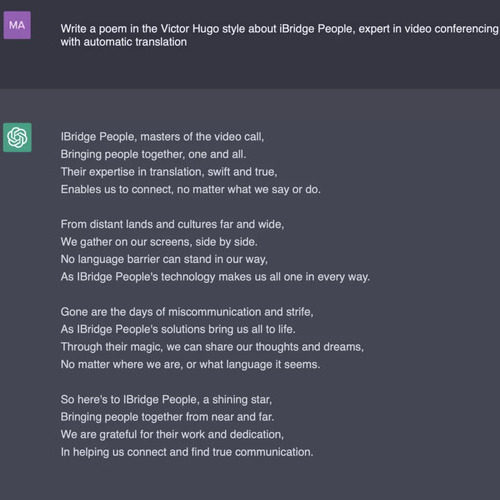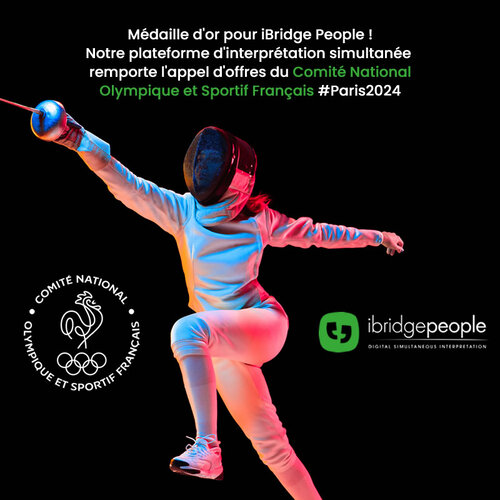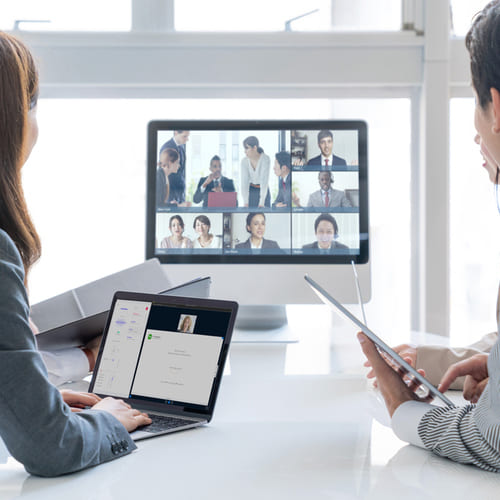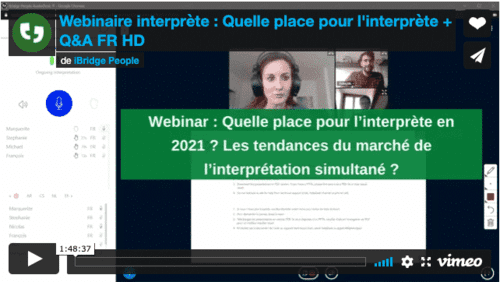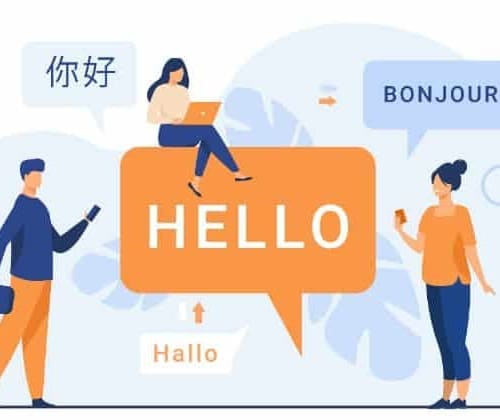When we think of international meetings, this is what comes to mind: interpreters in soundproof booths with headphones and microphones, translating the participants’ words in real time.
But interpreters sometimes have to do their work in other situations, for example, alongside the participants, without any technical equipment other than a notebook and pencil. This is called consecutive interpreting. Under certain conditions, the interpreter may use “gizmos”, a system of headphones and a micro-transmitter. This is a variant of simultaneous interpreting, with light equipment, used both in rooms and on site visits.
In this article, we will describe five interpreting situations you may encounter, with a brief description to help you understand this demanding profession.
1. Interpretation of links without technical equipment
The first case is visits to sites or facilities. Interpretation is carried out sentence by sentence and the interpreter is free to rephrase the questions and answers in order to provide more details in his or her response.
2. Whispered simultaneous interpretation
The second situation is whispered simultaneous interpretation. The interpreter stands back next to one of the participants and whispers the words spoken during the discussion so that the other participants are not disturbed by untimely interruptions.
Whispering is therefore a method of simultaneous interpretation. It does not require any technical equipment. However, it can be a tiring exercise for interpreters as whispering for a long time is a particularly intense effort.
This method of interpreting can also be impaired by noise disturbing the meeting, either from inside, such as ventilation, or from outside, such as rain or possible construction work that makes listening difficult.
In addition, in this configuration, the time lag to maintain an optimal distance from the original speech can result in so-called “vocal ear spam” between the moment the speaker starts speaking and the moment the interpreter starts translating his words. The greater the gap, the more elements of the speech the interpreter has to retain in his or her short-term memory as he or she listens and processes the information at the same time as interpreting. This requires an enormous amount of concentration.
On the other hand, if the gap between these two moments is too short, the interpreter may unintentionally alter the speaker’s grammar, syntax and original idea; hence the importance for the interpreter to find the optimal interpreting distance, which starts about 2 to 3 seconds after the speech has started.
3. Consecutive interpretation in a diplomatic context
Let us now turn to the third situation, which is an international conference, such as the Paris Conference of 1919, which was the first event at which the need for professional interpretation became apparent. On this occasion, long consecutive was the preferred method of interpretation. The technology was not as developed as it is today, to say the least. The preferred method was therefore note-taking, and interpreters were used to learn their trade “on the job”.
In this sense, interpreters take notes while the speaker is speaking. Then, the interpretation is staggered, as the speaker stops to make room for the interpretation, which is based on the note-taking, before the speaker resumes his or her speech.
This interpretation requires a single interpreter who focuses all his or her attention on taking clear and precise notes, in order to transcribe not only the speaker’s words, but also the essence of the speech, the tone and the conclusion of the speech.
This method of interpreting does not require technical interpreting equipment. However, it should be noted that the intervention time is doubled, as the interpreter has to be expected to speak for about the same amount of time as the original speech.
4. Simultaneous interpretation on digital platforms
The most common form of interpretation uses technical elements such as “gizmos” (headsets and micro-transmitters) or more sophisticated systems that include an interpretation control room with a technician and soundproof booths where the interpreters are located. But this system has just undergone a major change to accommodate video-conferencing or hybrid events that make multilingual meetings with participants from all over the world possible.
Nowadays, you are more likely to experience this fourth situation, due to the consolidation of digital tools, the multiplication of videoconference systems and the limitation of travel. As a result, exchanges between the different points that connect the major companies in the world are maintained through the organisation of international meetings or online conferences that allow representatives from different countries to continue to exchange.
Digital interpreting services are profoundly transforming online meetings and allow all languages to be translated in real time, so that not only the language barrier but also the physical distance between speakers of the same language is eliminated. This means that people who do not speak the same language can still communicate with each other, no matter where they are.
This is made possible by sophisticated remote interpreting technology, coupled with professional interpreters available 24 hours a day, anywhere. During a remote meeting, a virtual booth is set up so that the interpreters can translate what is being said. This allows the meeting to run smoothly for the participants, who do not have to worry about what is going on behind the scenes. They can also have a written chat available to them so that they can express themselves in writing at the same time.
In order to avoid excessive fatigue and the risk of interpretation deteriorating, it is essential to mobilise two interpreters for an event, so that they can take turns every 30 minutes.
Simultaneous interpreting allows for greater fluidity of exchanges, so it is important to maintain this ease of communication by taking care of the interpreters who ensure optimal translation of the interventions during meetings and conferences held online.
5. Simultaneous interpreting in hybrid contexts
At international events and trade fairs, simultaneous interpreting connects the face-to-face event and the remote actors, thus contributing to the success of your presentation. It goes without saying that several different systems can be used. Here we will mention the system needed for hybrid contexts, in which an interpretation system on a digital platform is linked to a digital system to allow interaction with remote actors.
In this context, if you want to plan a trade fair, a seminar or a congress, you can organise a hybrid event to ensure that the physical system and the remote actors are interconnected. Thus, headsets and microphones are available to the participants in the space of your choice, while ensuring the quality of the connections linked to the digital platform. These installations allow you to create a global event that also includes remote participants.
In this sense, there is no obligation to be on site or at a distance, since it is possible to connect participants in the room with others at a distance, regardless of whether they are connected via a PC or a smartphone. The aim is to make it easy for each participant to connect with as little manipulation as possible, no matter where they are.
In summary
We have gone from the art of using the consecutive interpretation method with note-taking, to the possibility of connecting a large number of people, at the same time, to a 100% online event, in just a few years.
The technical progress of remote simultaneous interpreting is striking and demonstrates once again the human capacity to face economic and social crises with an uncommon adaptability.
The practice of hybrid events is becoming firmly rooted in the habits of the events sector. This allows us to foresee a way out of the crisis so as to integrate videoconferencing into the development of companies. Employees will now be able to connect with the collaborative work tool that suits them, such as Zoom, Teams or directly via the iBridge People solution. The latter allows everyone to enter a virtual meeting room to listen in their own language and speak in all the others.
Do not hesitate to send us your questions and comments.
